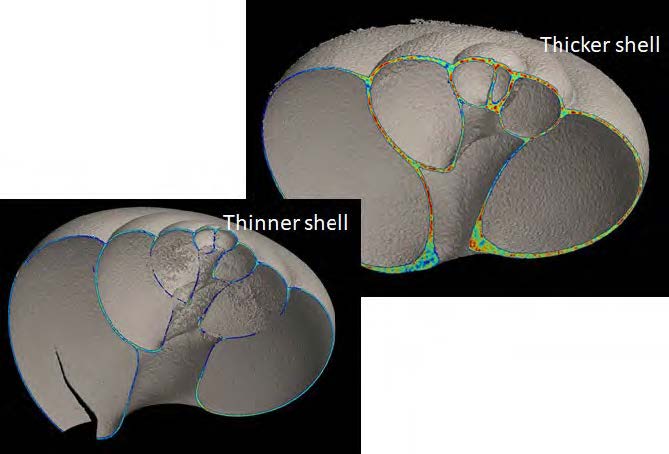Study underscores complexity of predicting acidification’s impacts on marine organisms

SCCWRP and its partners have completed a three-year study examining the vulnerability of fisheries in the world’s polar regions to ocean acidification (OA) – an analysis that has illuminated the complexity of predicting the regional-scale impacts of acidification on vulnerable marine organisms at the base of marine food webs.
The study, completed in October, predicts how commercial fisheries in one of the most productive polar habitats of the Gulf of Alaska and the Bering Sea will be impacted as fish’s primary diet – which is heavily dependent on pteropods, or sea snails – becomes increasingly vulnerable to OA.
The study showed that assessing biological vulnerability of pteropods to OA is not uniform, with vulnerability significantly influenced by factors including genetics of the population, compensation responses and how their demographics are connected across large spatial scales.
In some cases, despite having an identical genetic structure (which does not confer any resilience to OA), some populations of pteropods were less vulnerable because of large-scale spatial connectivity that continuously brings influxes of new organisms into the region.
The study’s findings are important as researchers pursue development of biological thresholds that establish for environmental managers how marine life will be impacted by changing seawater chemistry. The impacts of OA will both directly affect vulnerable organisms as well as ripple through marine food webs.
Historically, OA researchers have conducted only laboratory experiments to understand how organisms like pteropods become vulnerable to intensifying OA conditions.
In showing that pteropods and the fish that feed on them are not uniformly affected by a given OA exposure regime, this study makes the case that multi-faceted lines of evidence must be examined when deriving biological thresholds for pteropods.
SCCWRP and its partners will be able to apply the same type of analysis as they work to define the biological thresholds at which West Coast marine ecosystems will be impacted by OA in the coming decades. The biological thresholds, in turn, will help environmental managers interpret powerful computer models that SCCWRP and its partners are developing to predict OA’s regional impacts.
Already, the West Coast modeling team has begun studying population connectivity in the Southern California Bight and along the California coast to more comprehensively assess OA-related vulnerability among sensitive marine populations.
Fisheries managers in the high-latitudinal polar regions also will benefit from the study’s findings as they work to manage fisheries in an area that is undergoing one of the world’s most rapid OA changes.
The findings have been submitted as a report to the Alaska-based North Pacific Research Board; a journal manuscript also is being written.
For more information, contact Dr. Nina Bednarsek.
More news related to: Climate Change, Ocean Acidification and Hypoxia, Top News